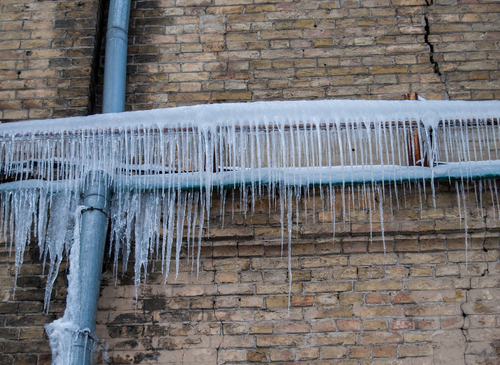Tips for Avoiding Frozen Pipes in Winter: Specialist Advice
Tips for Avoiding Frozen Pipes in Winter: Specialist Advice
Blog Article
We've encountered this post about Helpful Tips to Prevent Frozen Pipes this Winter down the page on the web and figured it made sense to discuss it with you here.

Cold weather can wreak havoc on your plumbing, particularly by freezing pipes. Below's exactly how to stop it from taking place and what to do if it does.
Introduction
As temperature levels decline, the risk of icy pipelines boosts, potentially resulting in costly repairs and water damage. Comprehending just how to prevent icy pipes is vital for homeowners in cool environments.
Understanding Frozen Pipelines
What triggers pipes to freeze?
Pipes ice up when subjected to temperatures below 32 ° F (0 ° C) for prolonged periods. As water inside the pipelines freezes, it broadens, putting pressure on the pipe wall surfaces and possibly creating them to break.
Dangers and damages
Icy pipelines can bring about supply of water disruptions, residential or commercial property damage, and pricey fixings. Ruptured pipelines can flooding homes and create substantial structural damage.
Indicators of Frozen Pipes
Identifying icy pipelines early can prevent them from bursting.
How to identify frozen pipes
Try to find lowered water circulation from taps, uncommon smells or sounds from pipes, and noticeable frost on revealed pipelines.
Avoidance Tips
Protecting vulnerable pipes
Wrap pipelines in insulation sleeves or make use of heat tape to shield them from freezing temperatures. Concentrate on pipelines in unheated or exterior locations of the home.
Home heating methods
Maintain interior rooms appropriately heated, particularly locations with pipes. Open up cabinet doors to allow warm air to flow around pipelines under sinks.
Securing Outdoor Pipes
Garden hoses and outside faucets
Detach and drain garden hoses before winter season. Mount frost-proof faucets or cover exterior taps with insulated caps.
What to Do If Your Pipes Freeze
Immediate actions to take
If you suspect frozen pipes, maintain taps available to alleviate stress as the ice thaws. Utilize a hairdryer or towels taken in hot water to thaw pipelines slowly.
Long-Term Solutions
Architectural adjustments
Consider rerouting pipes far from exterior wall surfaces or unheated locations. Add extra insulation to attic rooms, basements, and crawl spaces.
Upgrading insulation
Buy top quality insulation for pipes, attic rooms, and walls. Correct insulation helps keep regular temperatures and minimizes the danger of icy pipelines.
Verdict
Protecting against icy pipes needs positive actions and quick actions. By recognizing the causes, indicators, and preventive measures, house owners can secure their plumbing during winter.
5 Ways to Prevent Frozen Pipes
Drain Outdoor Faucets and Disconnect Hoses
First, close the shut-off valve that controls the flow of water in the pipe to your outdoor faucet. Then, head outside to disconnect and drain your hose and open the outdoor faucet to allow the water to completely drain out of the line. Turn off the faucet when done. Finally, head back to the shut-off valve and drain the remaining water inside the pipe into a bucket or container. Additionally, if you have a home irrigation system, you should consider hiring an expert to clear the system of water each year.
Insulate Pipes
One of the best and most cost-effective methods for preventing frozen water pipes is to wrap your pipes with insulation. This is especially important for areas in your home that aren’t exposed to heat, such as an attic. We suggest using foam sleeves, which can typically be found at your local hardware store.
Keep Heat Running at 65
Your pipes are located inside your walls, and the temperature there is much colder than the rest of the house. To prevent your pipes from freezing, The Insurance Information Institute suggests that you keep your home heated to at least 65 degrees, even when traveling. You may want to invest in smart devices that can keep an eye on the temperature in your home while you’re away.
Leave Water Dripping
Moving water — even a small trickle — can prevent ice from forming inside your pipes. When freezing temps are imminent, start a drip of water from all faucets that serve exposed pipes. Leaving a few faucets running will also help relieve pressure inside the pipes and help prevent a rupture if the water inside freezes.
Open Cupboard Doors
Warm your kitchen and bathroom pipes by opening cupboards and vanities. You should also leave your interior doors ajar to help warm air circulate evenly throughout your home.
:strip_icc()/snow-outdoor-faucet-pipes-4af65d1e5e904fb1aa7bf74071fe5d89.jpg)
I am very curious about Helpful Tips to Prevent Frozen Pipes this Winter and I'm hoping you enjoyed the entire piece. Liked our article? Please quickly share it. Let others find it. Thanks for your time. Please come by our blog back soon.
Book Appointment Now Report this page